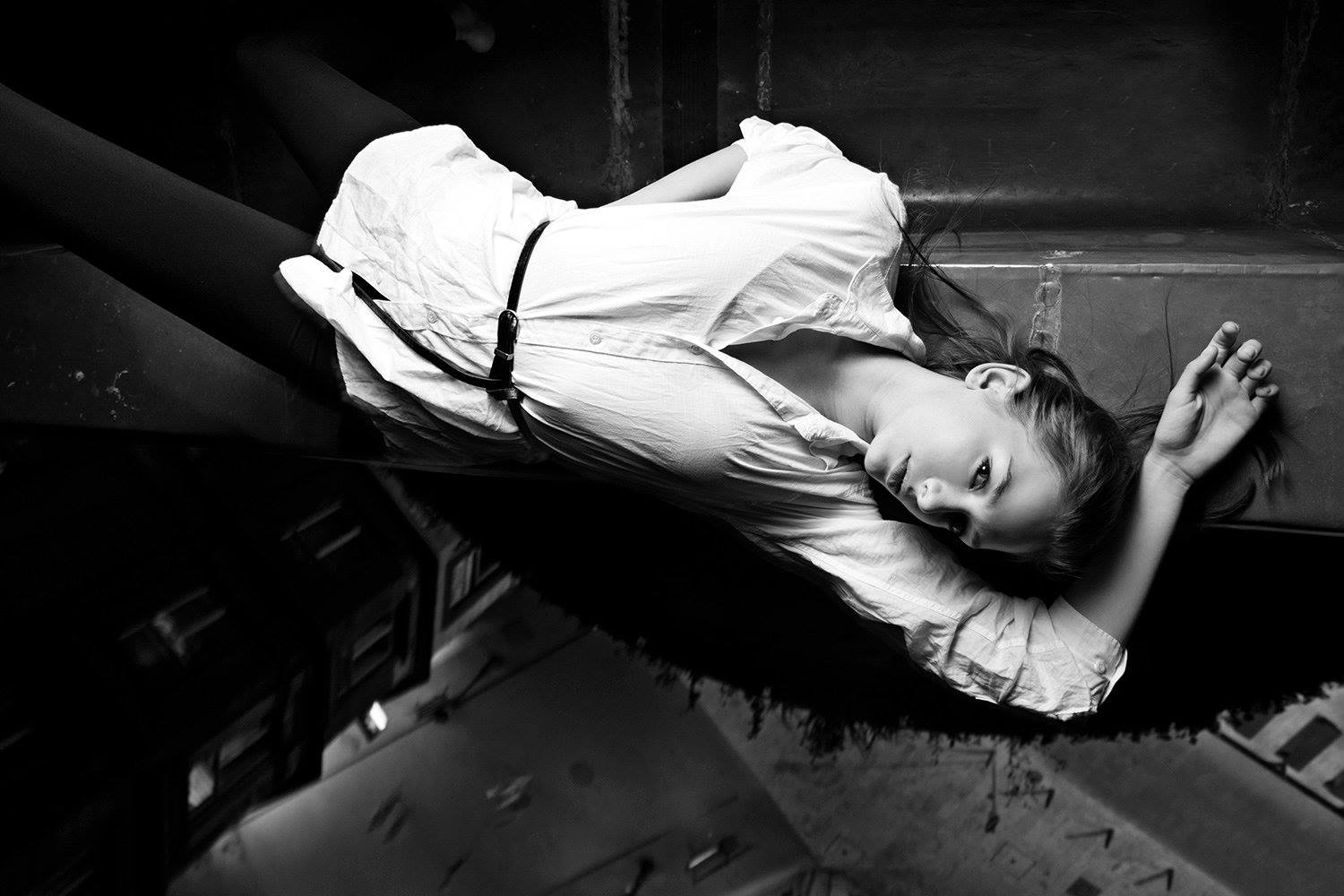L’illusione “tosa” il compiuto – An illusion “shears” the completed
Citiamo l’affresco Gloria di Sant’Ignazio, di Andrea Pozzo, a Roma (1691-1694). Qualcosa che visivamente apra la volta della navata centrale. Così, le teorie dei santi, seduti sopra le nuvole, s’eleveranno nel cielo azzurro. Nel complesso, la scena sarebbe ambientata dentro un tempio classicheggiante, le cui colonne avranno semplicità e solidità, benché nella complicazione della loro alternanza, fra gli addensamenti delle persone o la rarefazione delle nuvole. Le figure fluttueranno assieme. Perfino le persone si percepirebbero come le nuvole, intersecando l’architettura. Sul pavimento della navata, c’è un disco dorato, da cui si guarderà meglio l’illusione del tempio “in volo”. Per il filosofo Merleau-Ponty, più genericamente l’arte non può mai rappresentare qualcosa di compiuto, altrimenti quella si ridurrebbe al classico oggetto d’uso. Il fenomeno estetico gli pare essenzialmente “prospettico”, avendo almeno “l’illusione” d’una vitalità. Eszter sarà stata scaraventata in aria, assieme a più palazzi. La fotografia si percepirà fondamentalmente nel raggismo del suo collage. Noi avremmo l’illusione ottica che l’architettura s’apra al cielo. Un semicerchio nero divide Eszter dal palazzo più “scaraventato” (alla nostra sinistra). E’ là che noi dovremo guardare, perché le figure virtualmente seguano il giro del Sole, “svolazzando” in cielo verso il “tramonto” della propria profondità. Il semicerchio nero fungerà da lama rotante, letteralmente “tosando” ogni luce (apertura) architettonica. In via estetica, è l’illusione che la materia del mondo arrivi a porsi “persino” universalmente, guardandone la profondità. Il semicerchio nero ci pare “sporcato d’erba tagliata”. Esso sarà avviato, nella propria rotazione, dal braccio sinistro “a pala”, o forse “a dente”… Resta la figura centrale di Eszter, più “positivamente” bianca. A differenza del palazzo, l’uomo ha un’anima. Almeno questa potrà scaraventarsi, dalla terra al cielo, ed oltre il “buio” del nulla?
We mention the fresco Glory of St. Ignatius, by Andrea Pozzo, in Rome (1691-1694). Something that visually opens a vault of the central nave. So a procession of saints, sitting on the clouds, will soar in the blue sky. On the whole, the scene seems set inside a classical temple, where the columns will have simplicity and solidity, although in a complication of their alternation, between the people’s hardening or the rarefaction of clouds. The figures will fluctuate together. Even people would be perceived as the clouds, intersecting the architecture. On the nave’s floor, there’s a golden disk, from which we will better watch the illusion of a temple “on the fly”. According to philosopher Merleau-Ponty, more generically art never can represent something that is complete, otherwise it would be reduced to a classic product. The aesthetic phenomenon seems to him essentially “perspective”, having at least “the illusion” of a vitality. Eszter probably was thrust out in air, together many palaces. The photography will be perceived fundamentally in a rayonism of its collage. We would have the optical illusion that the architecture is open to the sky. A black semicircle divides Eszter from the palace more “thrust out” (on our left). There we will have to watch, so helping the figures virtually to follow the Sun turning, while these “blow in the wind” into the “sunset” of own depth. The black semicircle will function as a rotating blade, literally “shearing” every architectural light (opening). Aesthetically, that’s the illusion for which the world’s matter could even place itself in the universality, observing its depth. The black semicircle appears to us “stained by a mowing grass”. It was started, for its rotation, by a left arm as “a blade”, or maybe as “a tooth”… The central figure of Eszter, more “positively” white, remains. Unlike a palace, men have a soul. Could this one at least thrust out itself, from the ground to the sky, and beyond the “dark” of nothingness?
Bibliografia consultata – Annotated bibliography:
V. PANNOCCHIA, Di scena in scena, Alinea Editrice, Firenze 2002, pp. 74-78
Nota biografica sugli artisti recensiti – Biographical sketch about the two artists:
Il fotografo ungherese Zoli Racz lavora a Budapest. Egli cominciò a scattare da giornalista, nel suo paese di nascita. Volendo lavorare nel ramo del fashion, Zoli dovette spostarsi nella capitale, Budapest. Là, egli trovò l’amicizia del direttore presso l’Agenzia “VM Model Management”, così iniziando a fotografare le loro ragazze, fra cui Eszter Boldov.
The Hungarian photographer Zoli Racz works in Budapest. He began to shoot as journalist, in his hometown. Wanting to work in the field of fashion, Zoli had to move in the capital, Budapest. There, he got the friendship of the director at Agency “VM Model Management”, so beginning to photograph their girls, among which Eszter Boldov.
www.zolracz.tumblr.com
La modella ungherese Eszter Boldov lavora a Budapest. Professionalmente lei ha molti successi. Eszter è comparsa nella rivista L’Officiel Italia, e regolarmente su quella Vogue Italia. Lei però ha posato anche a New York, Parigi, Londra. Una notte, Eszter dovette fermarsi presso l’Agenzia “VM Model Management”, a Budapest, prima di partire per la Francia. Zoli aveva ancora la macchina fotografica… Così egli realizzò una sessione di scatti per Eszter; ora uno di questi è stato pubblicato in “Discorsivo” Giornale! Anche lei lavora da caporedattrice, avendo ampliato il proprio blog “Philosophy”.
The Hungarian model Eszter Boldov works in Budapest. Professionally she is receiving a good success. Eszter appeared on the magazine L’Officiel Italy, and regularly on magazine Vogue Italy. She however posed also in New York, Paris, London. One night, Eszter had to remain at Agency “VM Model Management”, in Budapest, before leaving it for France. Zoli still had his camera… So he realized a photo session for Eszter; now one of their shoots is published on “Discorsivo” Magazine! She also works as editor-in-chief, after she expanded her blog “Philosophy”.


+ Non ci sono commenti
Aggiungi